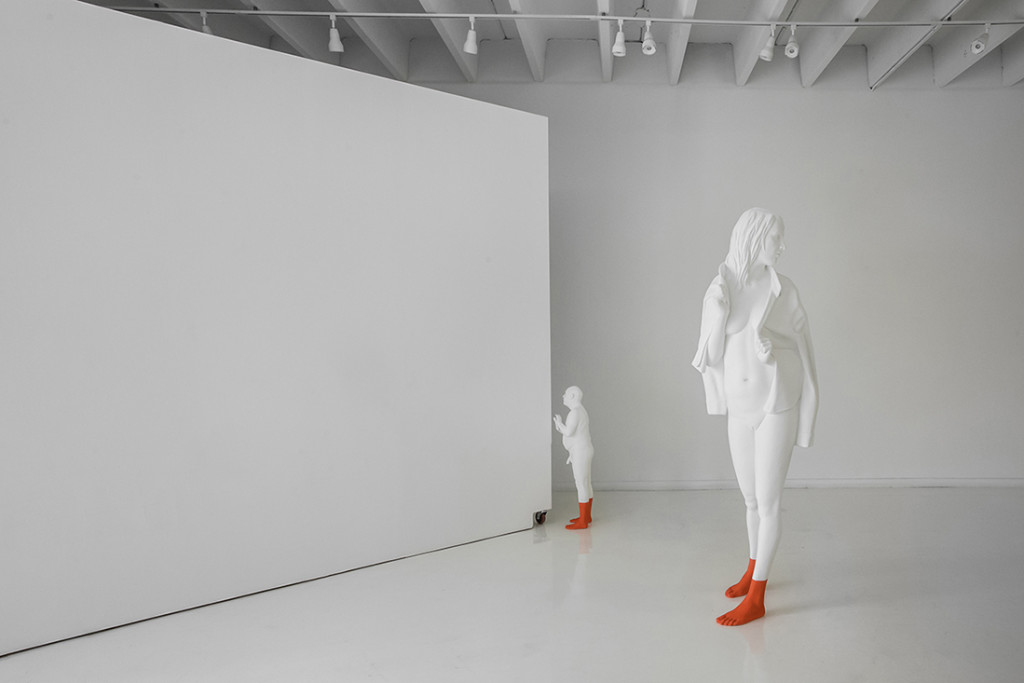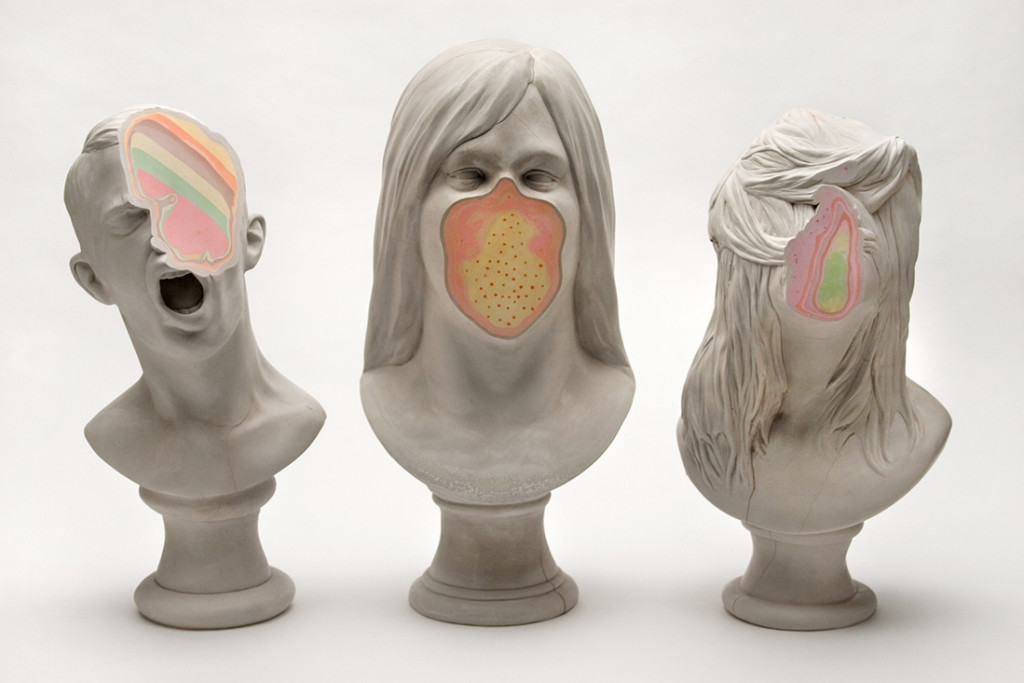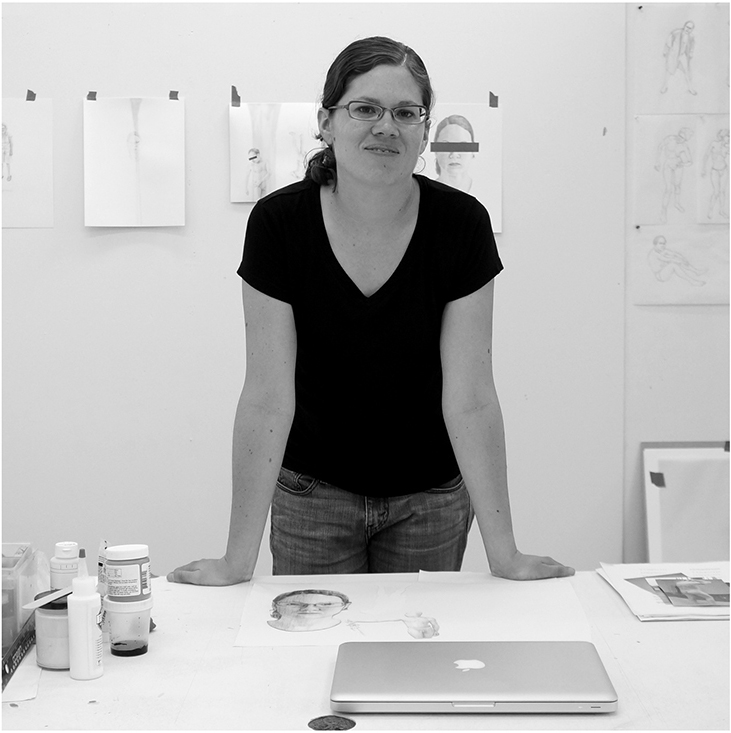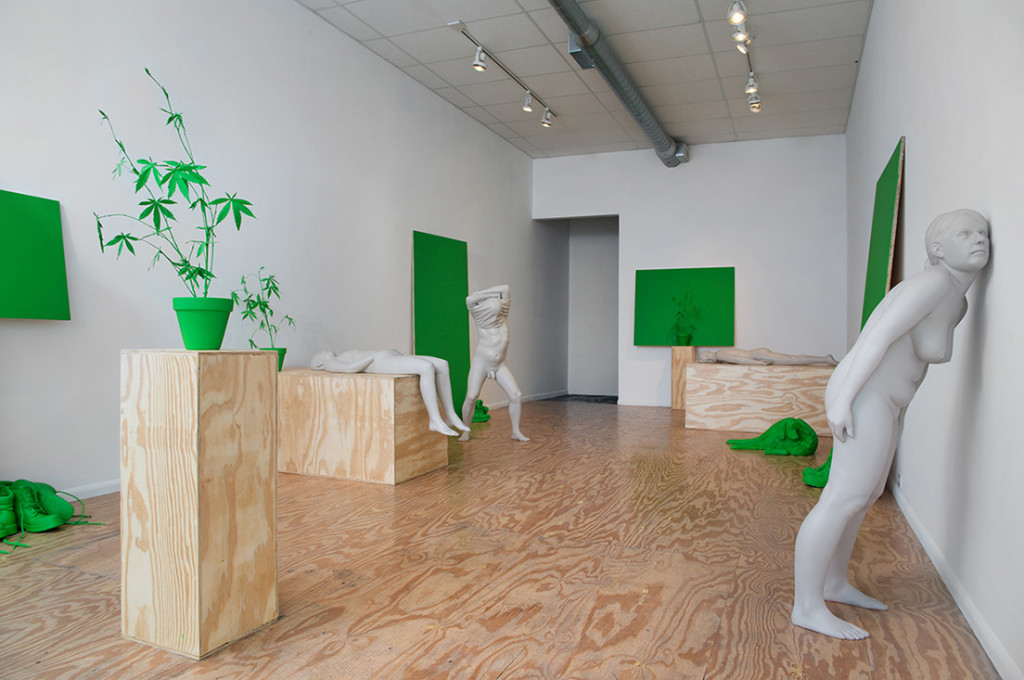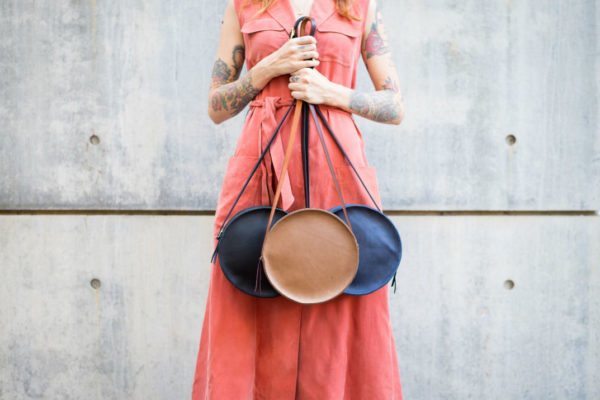If you’ve met Christina West, it’s possible she’s pictured you naked. But rest assured that, if so, her intentions are purely artistic. The Perry, Michigan native currently lives in Smyrna, working as a sculptor and associate professor of ceramics at Georgia State University. She’s exhibited her work everywhere across the country, from Washington and New York to Miami, and has received numerous grants and fellowships.
Her pieces, from busts and full-scale figurines to drawings and installations, showcase the artist’s inarguable talent without taking themselves too seriously—like a bust dubbed “Portrait of a Cool Guy,” featuring a dude cast in all white wearing sunglasses with just the hint of a deep-red nosebleed, or a life-size middleweight woman figurine thoughtfully pressing her ear against a wall. In this way, Christina’s admittedly dry sense of humor comes across in her work without being too obvious. When she’s not molding minds or clay, she can be found at local spots like Octane and Thumbs Up Diner.
West talked to CommonCreativ about why inspiration is for amateurs, her biggest artistic accomplishments and how she promotes herself.
CommonCreativ: What first sparked your interest in art?
Christina West: As long as I can remember I’ve been interested in making things, and that might have to do with my upbringing in a DIY-oriented family. From a the age of 5 or 6 onward, I would help my father with things like Bondo-ing his truck, sanding woodwork, painting things or laying cement block. At a young age I also started drawing a lot in notebooks and doing things like digging up clay from the yard and trying to make things out of it, or painting rocks with clear nail polish then gluing dead bugs on top of them. But I didn’t really know much about art until I went to college. I didn’t even visit an art museum until I was 18. I became truly hooked on art when I took my first college art classes and began to connect the idea of making with concepts.
CC: Which medium did you start with, and how did you transition to others?
CW: In undergrad I was a painting major, but by the end of my degree already knew that I would pursue ceramics for my MFA. At first I was drawn to creating forms with clay because I thought there was a lot of potential to treat the forms as canvases, and for a while I did paint images on them with oil paint. But what ultimately compelled me the most was the kind of presence that a three-dimensional object has—the way it sits in space with us and can affect the way we perceive our own body. I’ve used lots of different materials in addition to ceramics to create figures over the years, such as Aqua Resin, Hydrocal, stuffed fabric, playdough and cast silicone. Those material choices ultimately come down to what makes the most sense for a particular piece, both conceptually and practically.
CC: What inspires you?
CW: My inspiration comes from encountering good work, talking with like-minded artists, and just working itself. Chuck Close said, “Inspiration is for amateurs—the rest of us just show up and get to work.” I like that quote because I’ve found it to be true that I get most of my ideas for new pieces while I’m working. So even if I don’t feel inspired to work, I just go to the studio and make myself do stuff and usually new ideas start to percolate.
CC: You’ve gotten some good press for your work and exhibits—how do you effectively promote yourself?
CW: I’ve been lucky to participate in some good exhibitions that generate press from both the content of the show and the promotion efforts of the venue. In addition to the gallery’s efforts, I always personally promote my exhibitions and studio activities on social media.
CC: You’ve got a penchant for humor — does that play into your art and teaching?
CW: I tend to have a dry sense of humor and am really good at sarcasm. With teaching, that just influences the way I might respond to a student with playful banter once we’ve developed a rapport. With my art, it’s harder for me to articulate, but I think there often is a subtle or sometimes dark humor there that comes from the situations I create making people feel a little uncomfortable or countering people’s expectations of what they are about to see.
CC: What have been some of your greatest artistic achievements?
CW: Some accomplishments that I’m most proud of have been my acceptance into residencies at the Archie Bray Foundation (Helena, MT) and the Bemis Center for Contemporary Arts (Omaha, NE), as well as receiving a New York Foundation for the Arts Individual Artist Fellowship. All of those opportunities were highly competitive and it felt extremely validating to receive them, but they also had significant impact on my career.
CC: Who are some of your favorite artists?
CW: Some of my favorites artists are Balthus, Eric Fischl, John Currin, Jenny Saville, Lucian Freud, Juan Munoz, Diane Arbus, Mark Manders, Lisa Yuskavage, Elizabeth King, and Urs Fischer.
CC: What do you think about the current state of Atlanta’s art scene?
CW: It’s promising that we have a wide range of venues exhibiting work at various levels—from spaces for emerging artists like Mint and Kibbee Gallery, to the galleries that show mid-career artists like Whitespace and Marcia Wood, to international canonized work being shown at the High Museum. It seems like there’s a structure in place that would allow for a robust scene if there were more support for the galleries from collectors. There also is a culture of benefit auctions that has developed here that I worry is ultimately hindering the scene. It’s common for artists to get numerous requests per year to donate work and, as a result, the market gets saturated with underpriced work of local artists.
A particular highlight within Atlanta’s art scene for me is The Zuckerman Museum of Art because it sets a high bar for curation and supports work with edgier content, such as the recent show Art AIDS America. As an artist who has shown there, I also think it’s great that their shows include both national and local artists because it helps expand the context that the work of Atlanta artists is seen within. For that same reason, Atlanta’s newest gallery, Hathaway David Contemporary, seems really promising since it has been said that one of their goals is to help Atlanta artists make connections elsewhere.
CC: What’s next for you?
CW: This summer I will be expanding my series of portrait busts titled Unmet. They are busts that are cast solid with multiple colors in their interiors. I carve into the faces of the figures after they are cast, excavating strata of color that present unpredictable shapes and patterns. The interiors allude to cross-sections seen in anatomy books, while also suggesting something about the complexity of character and psychology that make others so mysterious. So far there are 13 busts in the series, and I’m excited about ideas I have for new variations that expand upon this concept.
CC: Why do you make art?
CW: That’s a hard question to answer concisely because I think there are a lot of reasons at play. But the most general answer is because I’m good at it. Flannery O’Connor responded that way once when asked why she writes, and though it can sound arrogant if taken at face value, I think it’s true that ability and success intensify our interests.
You can find more of Christina’s work on her website.

